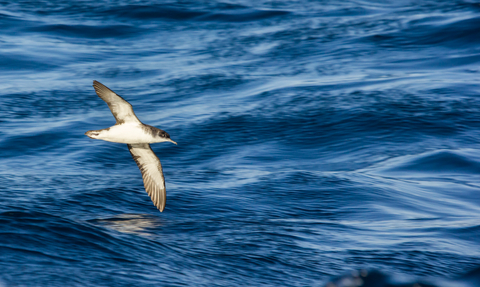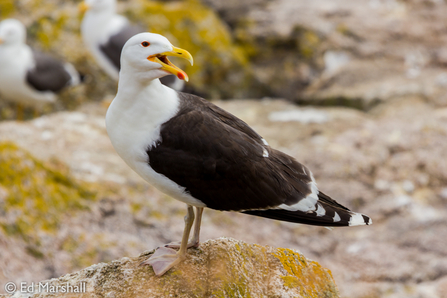
Manx Shearwater (c) Ed Marshall
Seabird Strategy
Think Scilly and think seabirds! From puffins to shearwaters, Scilly’s seabirds are a big part of what makes the islands special.
We’ve been studying the seabirds of the islands for decades, with our Seabird Ecologist, Dr Vickie Heaney leading this work for us since 2000. This year she’s joined by Hester Odgers as our 2024 Seabird Officer.
The Isles of Scilly are internationally important for seabirds, with a dozen species nesting here. However, many of these seabird species are in trouble, but the Trust is taking action to improve their prospects.

Credit: Ed Marshall
We organised a full breeding seabird survey in 2023, covering over 50 rocks and islands. This work was funded by Natural England, RSPB and the Isles of Scilly National Landscapes partnership. The report is available below.
The survey showed increasing numbers of Manx shearwaters and storm petrels, but worrying declines in shags and all our gull species. Furthermore, no breeding terns were recorded in 2023 whereas at one time we had up to four species of terns nesting regularly.
There is action we can take to benefit seabirds, particularly petrels and shearwaters. Rats are devastating predators of these birds. As a result we worked together to eradicate rats from St Agnes and Gugh ten years ago. As a result, storm petrels and Manx shearwaters are now breeding successfully on these islands again.
Both species are now increasing in Scilly, with more than 1,000 pairs of each. There’s a long way to go to recover Scilly’s historic importance for shearwaters, as between 100,000 and 150,000 pairs of shearwaters were thought to nest in Scilly in the nineteenth century.
We believe we can fully reverse this shearwater decline through rat eradication on all the rest of the off-isles, inhabited and uninhabited. The Isles of Scilly Seabird Recovery Partnership has our Islands Officer, Megan Lloyd, working with local people on Bryher, Tresco and St Martin’s to achieve this goal.
Read more about the work we do for our seabirds below.
